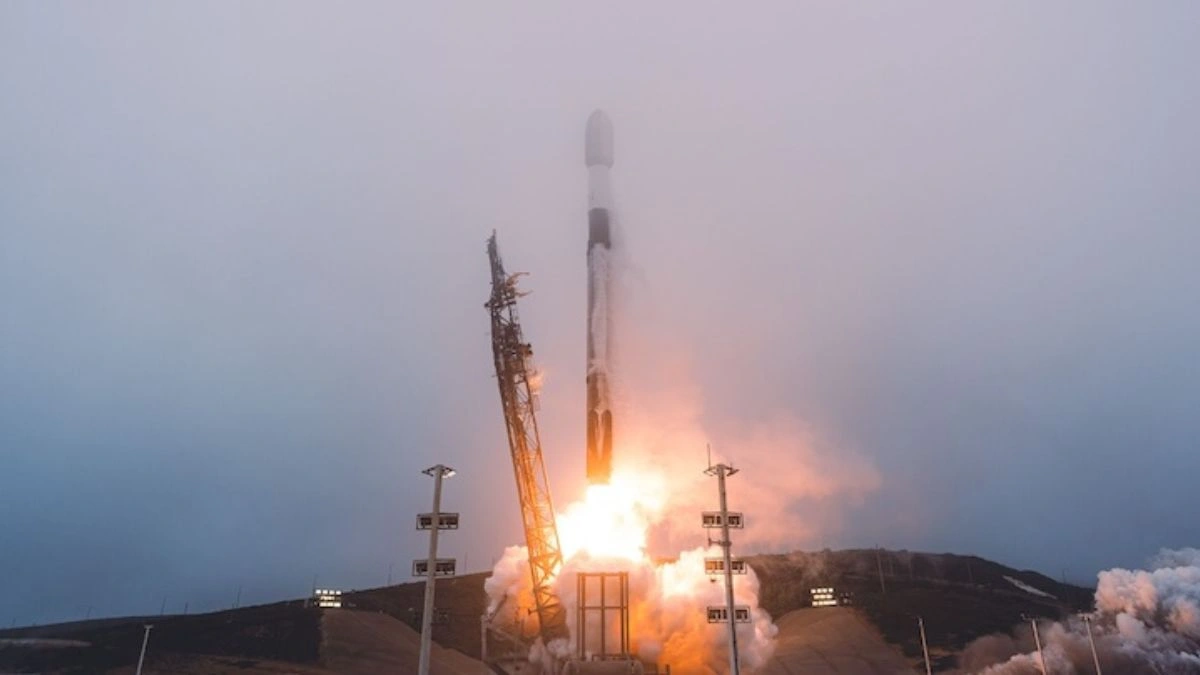Cape Canaveral, FL September 14, 2025 A SpaceX Falcon 9 rocket successfully launched an upgraded Cygnus cargo spacecraft to the International Space Station (ISS) on Sunday evening, marking the debut flight of the larger Cygnus XL variant.
The Falcon 9 lifted off from Space Launch Complex 40 at Cape Canaveral Space Force Station at 6:11 p.m. Eastern. Approximately 14.5 minutes later, the NG-23 Cygnus spacecraft separated from the upper stage. The cargo vehicle is scheduled to arrive at the ISS on September 17, 2025.
Cygnus XL: Bigger, Stronger, More Capable
The NG-23 mission introduces Cygnus XL, an enlarged version of Northrop Grumman’s standard cargo spacecraft. Its cargo module is 1.6 meters longer, boosting its payload capacity by roughly one-third to 5,000 kilograms. While NASA has not disclosed the precise allocation of cargo between crew supplies, science experiments, and station equipment, the increase allows for significantly more material to support ISS operations.
NASA engineers conducted extensive analyses to ensure the larger spacecraft would integrate safely with the ISS. According to Dina Contella, NASA ISS deputy program manager, the team assessed effects on life support, thermal control, and operations of the Canadarm2 robotic arm, which will grapple and berth Cygnus to the station.
Planned Operations and Temporary Relocation
Cygnus XL is scheduled to remain attached to the ISS until spring 2026. However, NASA plans a temporary unberthing in November to accommodate the arrival of the Soyuz MS-28 spacecraft at an adjacent docking port. Contella noted that Cygnus will be moved using the robotic arm to prevent interference with the Soyuz approach corridor. If necessary, the spacecraft will depart entirely and return before Soyuz docking.
Mission Background and Previous Delays
The NG-23 flight follows the NG-21 mission in August 2024, which also launched aboard a Falcon 9. Earlier, the NG-22 mission was indefinitely delayed after the pressurized cargo module sustained damage during shipment to Cape Canaveral.
Ryan Tintner, vice president of civil space systems at Northrop Grumman, confirmed the damage occurred at sea but did not elaborate on its extent, stating repairs are ongoing with the module’s manufacturer, Thales Alenia Space in Italy. Northrop Grumman intends to fly the NG-22 mission once the repairs are completed.
Transition to Falcon 9 and Future Launches
Historically, Cygnus missions launched on Northrop Grumman’s Antares rocket, with some missions using Atlas V following the 2014 Antares failure. After retiring the previous Antares version in 2023 which relied on Ukrainian-built first stages with Russian engines Northrop secured Falcon 9 launches as an interim solution.
Read More: Microsoft Windows Deadline: 30 Days Left Before Security Updates End
NG-23 marks the third Cygnus mission on a Falcon 9, following NG-20 in January 2024 and NG-21 in August 2024. Northrop is also developing a new Antares 330 rocket in partnership with Firefly Aerospace, featuring a Firefly-produced first stage. NG-24 is slated to launch aboard a Falcon 9 next year, with Antares 330 expected to be ready for future missions in 2026.
The Importance of Cygnus XL
The upgraded Cygnus spacecraft allows NASA and its commercial partners to deliver more supplies, experiments, and equipment to the ISS per flight. Its enhanced capacity supports ongoing station operations, from crew sustenance to critical scientific research. The NG-23 mission demonstrates continued collaboration between SpaceX and Northrop Grumman, highlighting the flexibility of commercial launch services in advancing human spaceflight.






